Types of Climate - Learn from Mind Maps
Create Your Mind Map NowTypes of Climate - Learn from Mind Maps
“I want to teach my students about different types of climate in the world, but I don’t have the right tools. Should I take the assistance of some mind maps to teach the Koppen climate types?”
If you are also undergoing a similar dilemma, then this post about the types of climate would meet your requirements. When it comes to the long-term weather conditions prevailing in a particular region, climate plays a vital role in it. Though a lot of people still don’t know about the types of climate in the world and how it is different from the weather. In this post, I’m going to explain different types of climate with the assistance of engaging illustrations.
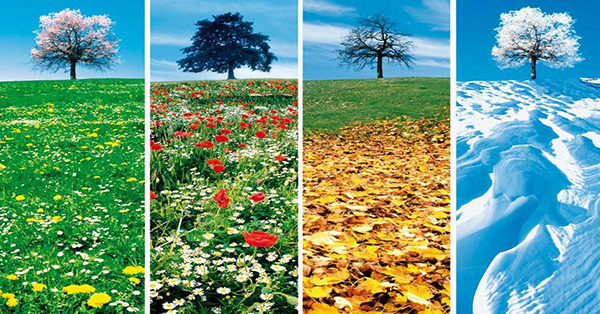
Image Source: http://www.ataqueydefensa.com/wp-content/uploads/2018/05/4-estaciones.jpg
What is Climate?
In a nutshell, climate defines the long-term weather conditions for a particular region. On the other hand, the weather is simply how the temperature and atmosphere are going to be for a place on a specific day/week/month. Weather can change in a day or sometimes within a day. Whereas, it can take years, decades, and sometimes even centuries for climatic conditions to change. The climate of a location can be affected by various parameters like longitude, latitude, altitude, terrain, pressure, temperature, wind, and the placement of water, ice, or earthly bodies.
How to Classify Climate?
There are different ways to distinguish types of climate in the world. The first way to list different types of climate is by genetic methods that are related to the causes affecting them. For instance, it takes into consideration air mass or relative frequency to classify different types of climate in the world.
Although, the empiric method is the most popular way to classify climate that is focused on its effect instead. In this, different climatic zones are defined based on evapotranspiration and plant hardiness. It is also known as the Koppen climate classification.
Different Types of Climate - Learn From Mind Maps
As you can see, the Koppen climate types are considered as the basis of defining the different types of climate in the world. Although there could be a wide variety of climatic conditions, the five major types of climate are tropical, dry, moderate (temperate), continental, and polar. Here’s a representation of their global distribution.
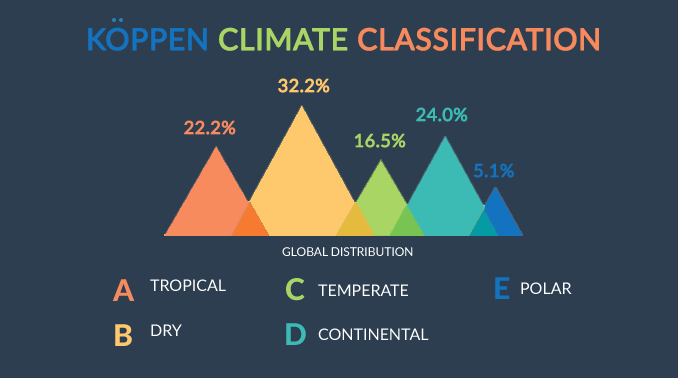
Image Source: https://earthhow.com/wp-content/uploads/2018/12/Koppen-Climate-Classification-1-678x378.png
Tropical climate exists in more than 22% of the landmass that prevails relatively warm weather all year long. This is a relatively warmer kind of climate and is mostly found in countries that are located near the equator. Tropical rainforests host a wide variety of flora and fauna due to their hot and moist climate. These types of climate can further be divided into tropical wet, tropical rainforest, or tropical dry.
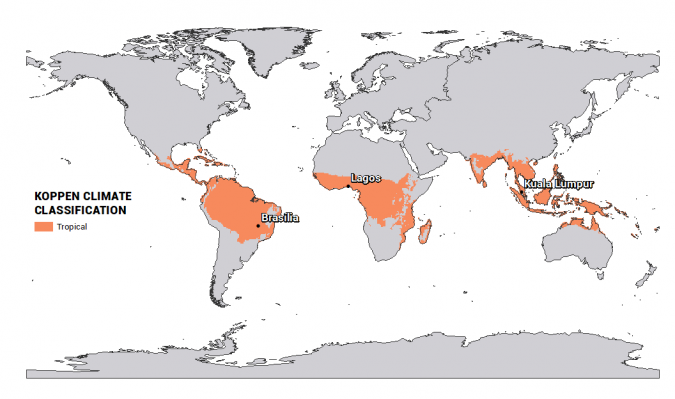
Image Source: https://earthhow.com/wp-content/uploads/2018/12/Koppen-Tropical-0-675x399.png
The dry climate is based on the availability of water apart from high temperatures. This is because most of the regions in this type of climate in the world suffer from water shortage. They can further be classified as semi-arid (if the precipitation is more than 50%) and arid (if the annual precipitation threshold is less than 50%).
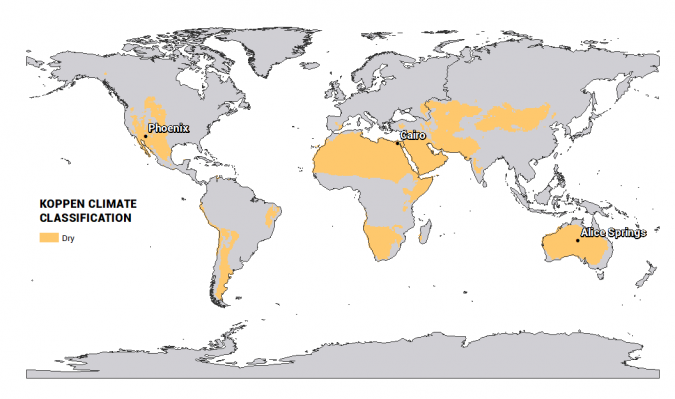
Image Source: https://earthhow.com/wp-content/uploads/2018/12/Koppen-Dry-0-675x399.png
Also known as the moderate climate type, it mostly exists near the edges of the landmass. In this, summers are mild with a minimum of 10 degrees Celsius, while the temperate in winters can range from 0-18 degrees Celsius. It can further be classified into three different types of climate. The Mediterranean type of climate has warm summers and rainy winters. The humid subtropical has rainy winters while the marine west coast sees a mild difference in temperature with some rain.
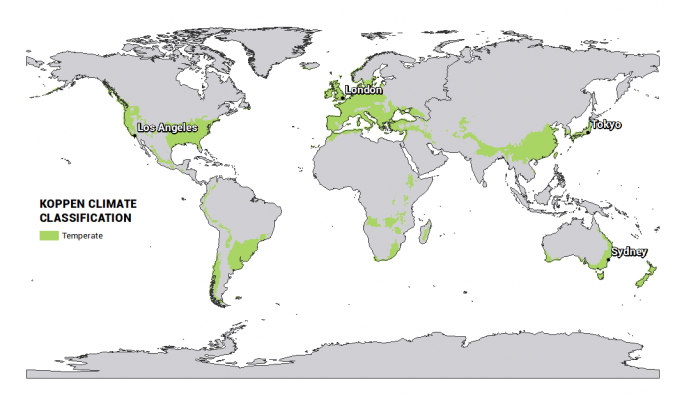
Image Source: https://earthhow.com/wp-content/uploads/2018/12/Koppen-Temperate-675x399.png
Also known as the micro-thermal climate, it exists is almost 24% of the total landmass of the world. It prevails in the interior landmass of the continents (away from the oceans) and witnesses at least a month with 0 degrees Celsius or less. These types of climate see a mild change in weather all year long and can further be classified into three kinds – continental dry, continental wet, and continental humid.
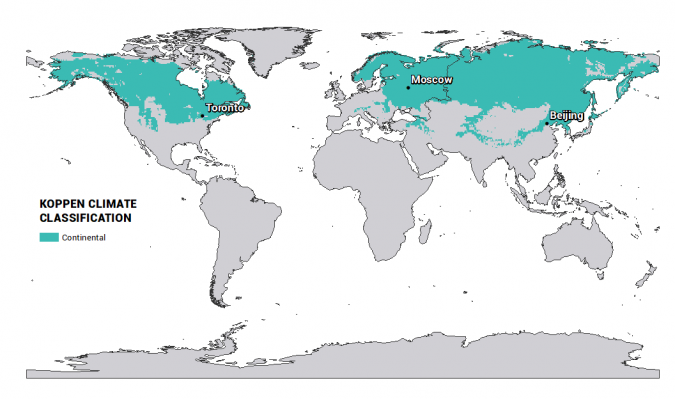
Image Source: https://earthhow.com/wp-content/uploads/2018/12/Koppen-Continental-675x399.png
Lastly, we have the polar climate type, which is the coldest type of climate overall. Apart from the North and South Pole, the polar climate can also be seen in the snow-clad mountains of the Himalayas in Asia and the Andes Mountains in South America. Although these places experience frigid cold weather all year long, the average temperature on the warmest of the month is observed as less as minus 10 degrees Celsius.
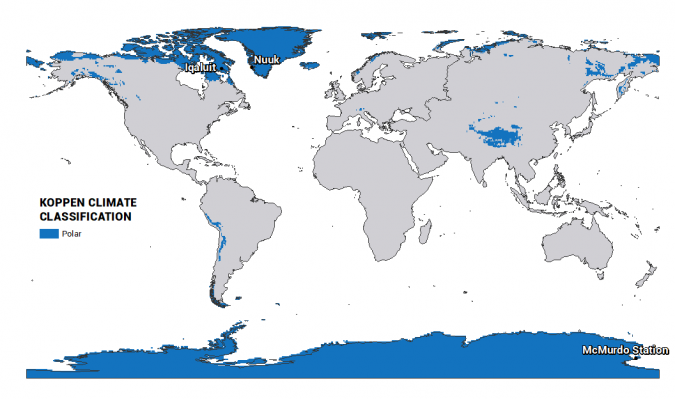
Image Source: https://earthhow.com/wp-content/uploads/2018/12/Koppen-Polar-675x399.png
How Can We Benefit from Mind Maps?
With the help of the right visual tools, you can even make a mundane topic interesting. Here are some of the benefits of mind maps that will inspire you to start working on them.
- Mind maps are not restricted to certain domains and we can work on them, irrespective of the subject.
- It is extremely simple to create mind maps as there are tons of tools that can help you.
- Using mind maps, we can explain even the most complex of topics to others easily.
- Your audience would be able to retain the shared information via mind map for the long run.
- Mind maps encourage self-learning, better understanding, and it is simpler to revise a topic with them.
A User-friendly and Resourceful Mind Map Maker - EdrawMind
If you wish to work on mind maps, then you can take the assistance of EdrawMind. A professional tool, it will let you come up with all kinds of illustrations like mind maps, timelines, etc. on the go. Since the tool features tons of vectors and pre-made templates, you can save your time and resources while working on your next mind map.
Step 1: Pick a topic
Firstly, just select a topic on which you wish to draw a mind map (like climate) and explore it a bit. You can do your research and collect the needed information.
Step 2: Use EdrawMind
Afterward, just launch EdrawMind and use the available tools to work on your next mind map. You can use the vectors to expand the mind map and further customize it the way you want.
Step 3: Save and export
Once you have the final mind map, just save it and export the illustration in the desired format to use it the way you like.
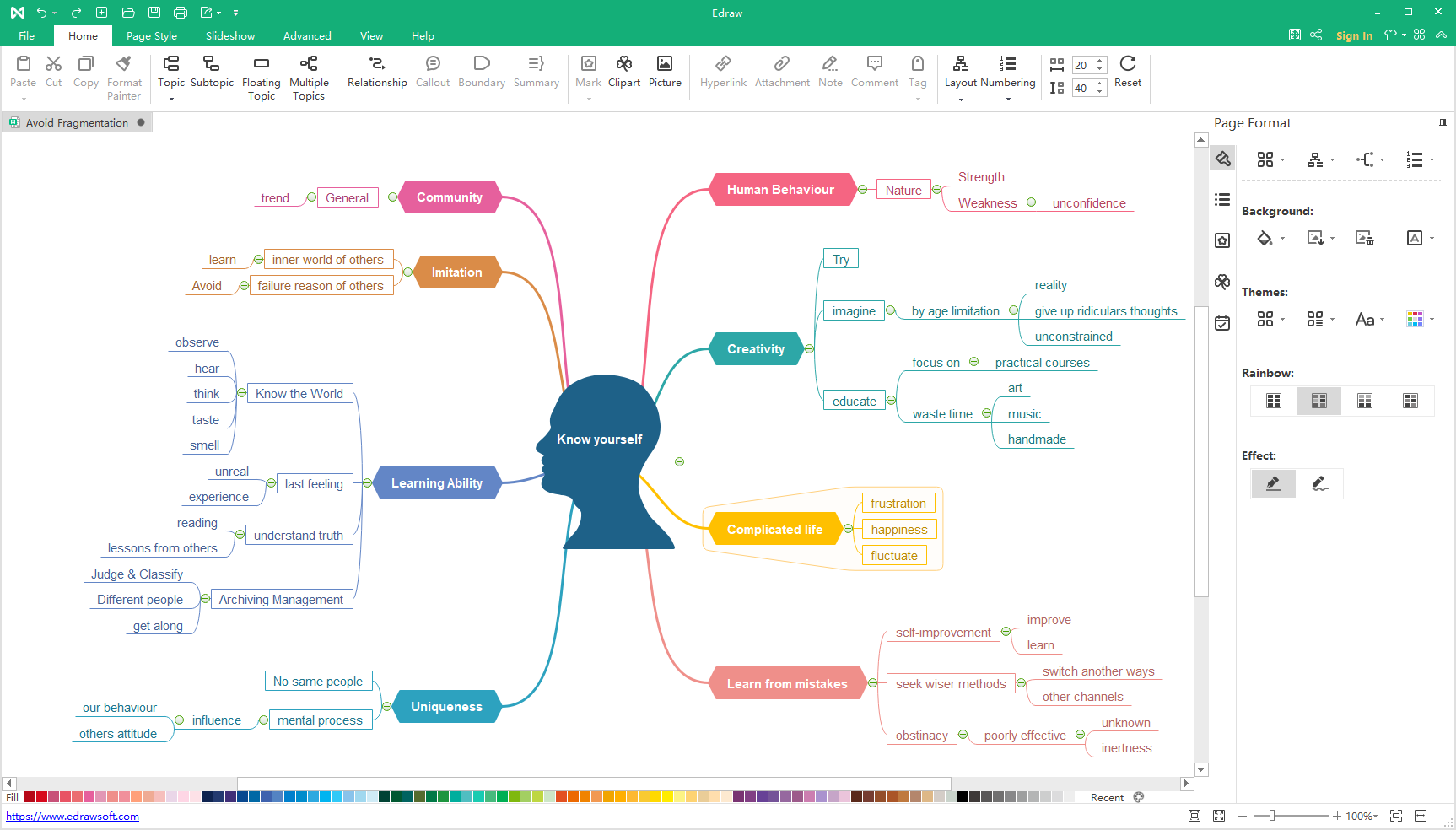
Now when you know about different types of climate, you can easily educate others about the same. Though, if you want to cover any other topic, then take the assistance of EdrawMind. It will let you come up with a wide variety of mind maps on the topic of your choice and that too, without utilizing your time or resources.

